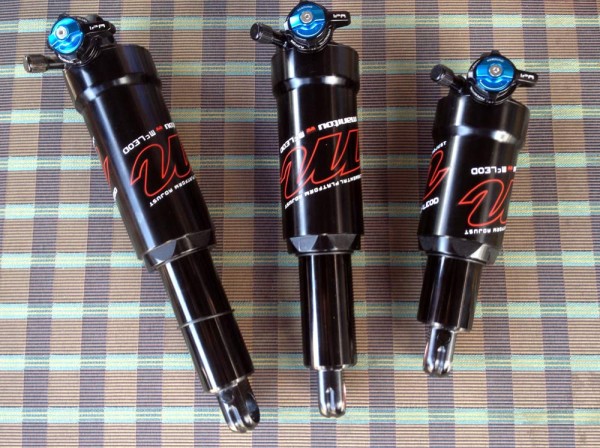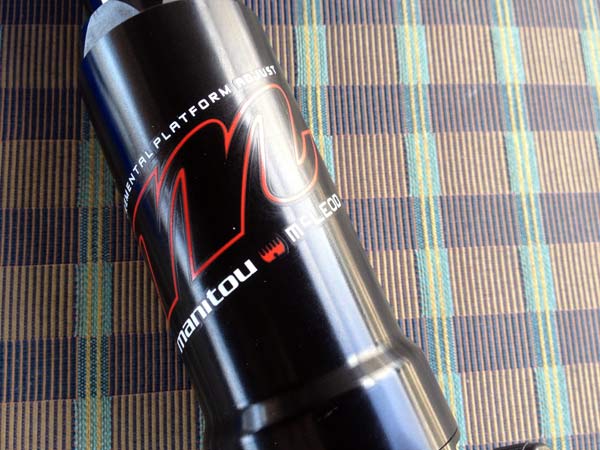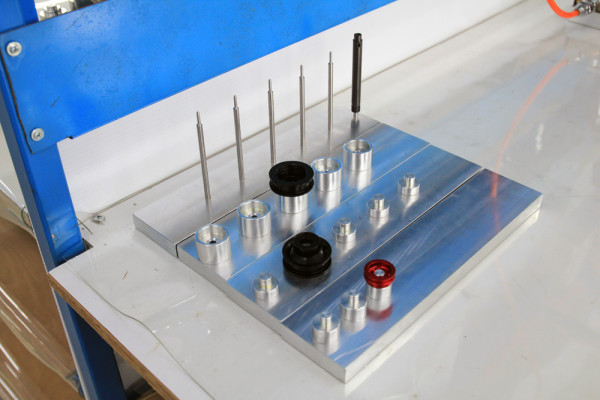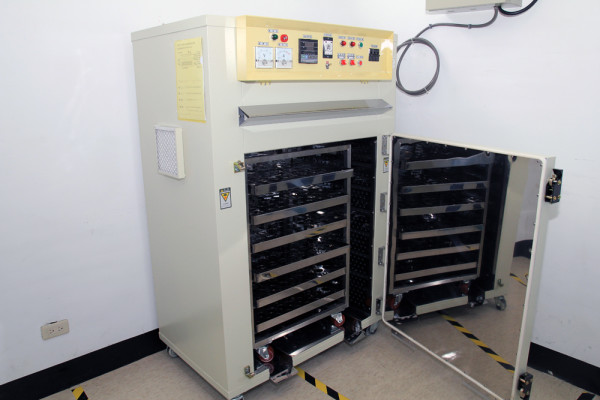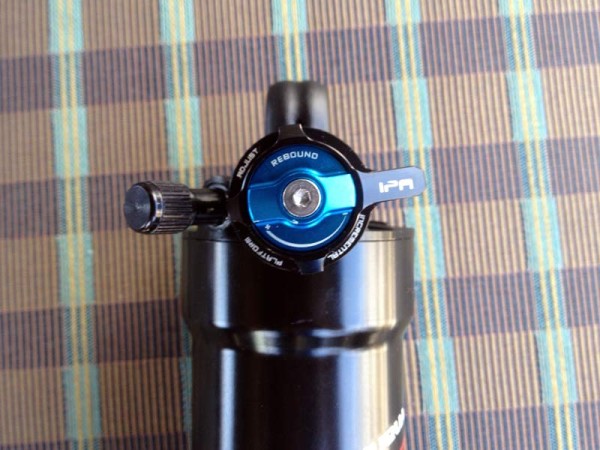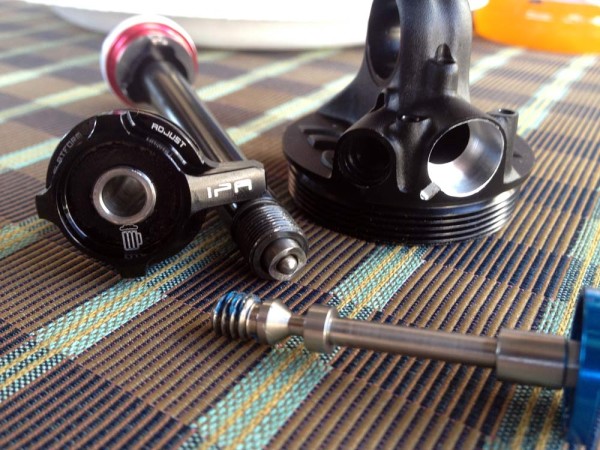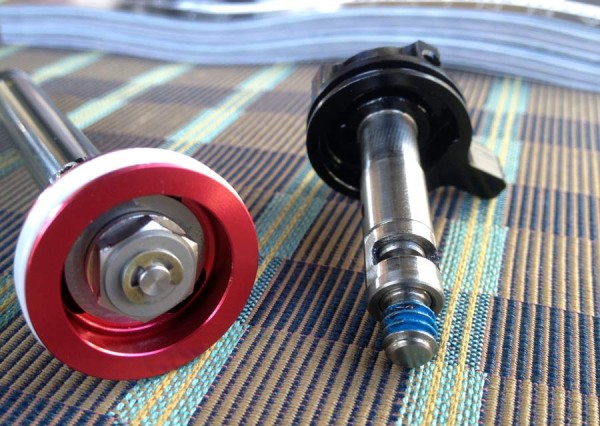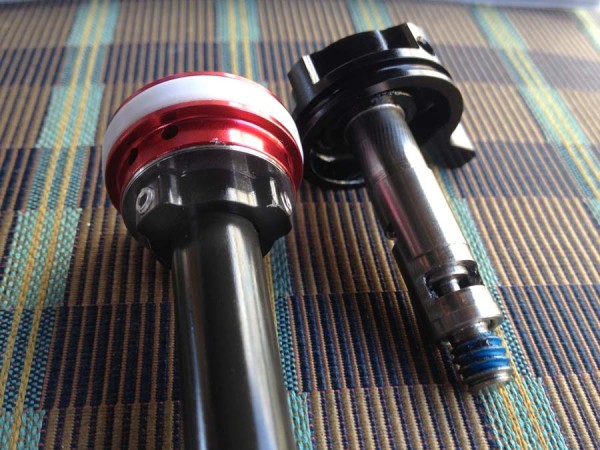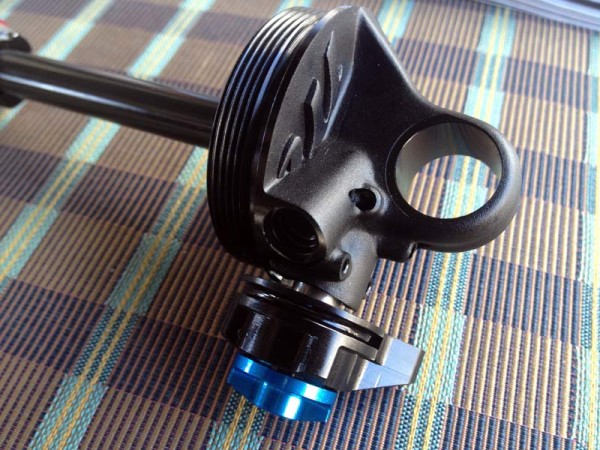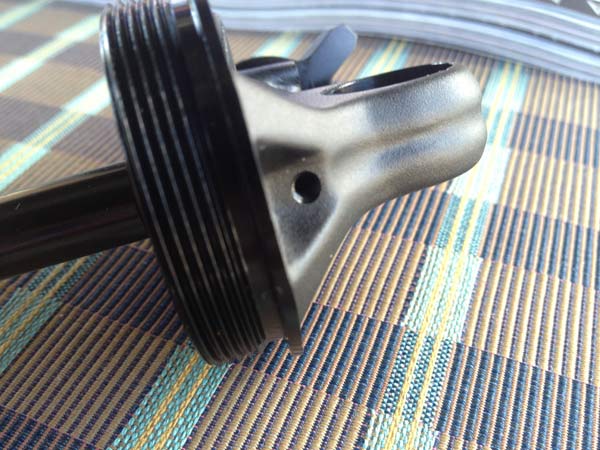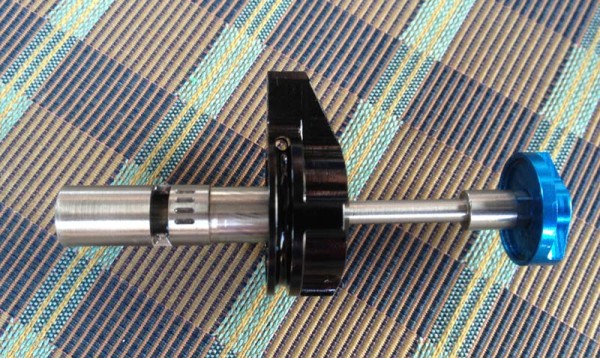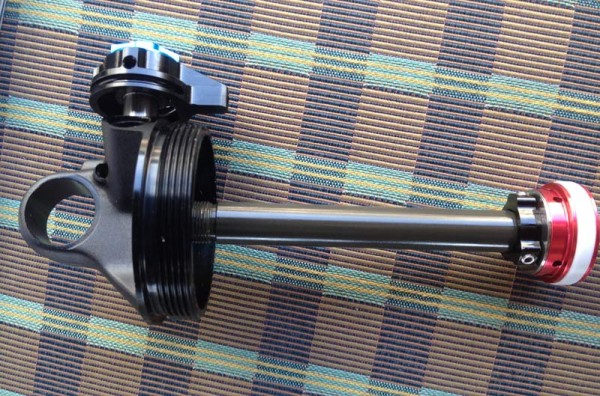Teased earlier and thought to be a new suspension fork, the Manitou McLeod turned out to be a rear shock designed to pair with their new Mattoc fork.
The shock is aimed at the high end, with full featured external adjustments, a slew of impressive compression and rebound damping technologies. All in a package with less moving mass for faster response to changing conditions and multiple platform settings to fine tune the pedaling to your liking. It all sounds impressive, suggesting performance could be on par with some of the best air cans out there.
Want more details? Saddle up and get ready for some trail work…
As one of Manitou’s premiere products, it joins the Dorado in their clean room manufacturing facility. Easily one of the cleanest work spaces we visited in Taiwan, only the best, highest trained employees work here using cellular manufacturing that you find in the rest of the factory. More on the factory coming soon!
New for the McCleod and for Manitou is using a water transfer decal for the finishing. the technique needs some special machinery like this dishwasher looking unit that arrived in Taipei just before we did. Water transfer decals are more durable, and add a premium aesthetic.
While the shock uses a standard air can for the main spring, the McLeod features a unique non-adjustable negative spring. Essentially the negative spring is created when you slide the air can on the shock body, trapping air between two seals which acts as the spring. Technically there is no “official” way to tune the negative spring, but we’re told that if you use a hair dryer on the can during assembly, the hot air will be less dense and offer a different tune.
At the heart of the McLeod’s damping is the all new IPA (Incremental Platform Adjust) where each click steps up the platform on the shim stack. IPA includes 4 platform settings with the first fully open for max flow, the second offering improved control, and the third and fourth acting as heavy pedaling platforms. Rebound control is given through the center knob which offers full rebound adjustment in one turn, without any detents.
The reason the rebound adjuster lacks detents, is that the patented adjuster mechanism hides the rebound control shaft inside the compression control. Using an all metal construction, the rebound knob has a reverse thread, so as you turn the rebound knob clockwise it moves the ramp of the adjuster against the rebound shaft changing the tension on the shim stack. This is what controls the flow of oil through the bottom of the damping shaft, while a check valve prevents fluid from being forced through the rebound circuit during compression.
When the compression lever is turned, the outer cylinder of the adjustment tube presses against the compression rod and actually presses against the shim stack forcing them against the piston head as the shims are pressed into a more conical shape, it takes more pressure for the oil to be forced through which provides the platform damping.
Most users probably won’t mess with any of the more advanced adjustment, but there are a few tricks available for the expert mechanic. Mostly they involve the allen screws in the shock head that act as stops for the adjustment knobs. Playing around with these can result in some custom lever action and damping settings but it’s not something that Manitou is really pushing.
This side view shows the rebound adjuster outside of the compression adjuster that it is inserted into, and the assembled damping system.
Initially, the McLeod will be available in 152×32, 216×63, and they are testing a 222×65 model, but after that they are getting to the limits of the IFP. Look for it to be spec’d as OEM equipment on North American and European bikes with aftermarket availability expected in early summer. Pricing is TBD and should be competitive with top of the line Fox and Rockshox products.
